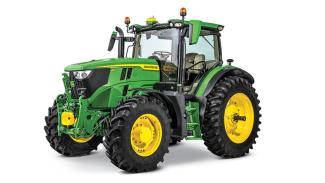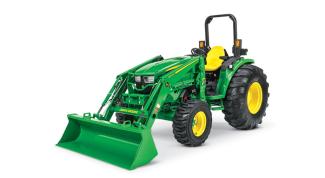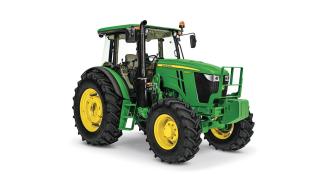Understanding Power Take-Off (PTO) speeds is crucial when selecting a tractor. PTO is the powerhouse behind various attachments and implements, making it essential to match the right PTO speed with your intended tasks. Here is a comprehensive guide to help you navigate PTO speeds and make informed choices for your agricultural needs.
What is tractor PTO, and why does it matter?
PTO is the mechanism that transfers power from the engine to various devices or implements. It is essentially a driveshaft that extends from the tractor's rear, providing rotational energy to operate a wide range of equipment, such as mowers, balers, augers, and grain carts.
The importance of a tractor PTO is its versatility and ability to harness its engine power for diverse agricultural and industrial tasks. Here is why it matters:
- Versatility: The PTO enables farmers and operators to use one tractor for multiple functions by attaching different implements. This versatility saves time, labor, and resources by allowing a single machine to perform various tasks across different seasons or operations.
- Efficiency and productivity: Using the tractor’s engine power, the PTO ensures consistent and reliable energy transfer to the attached equipment. This consistency in power delivery contributes to efficient operation, enhancing productivity in farming or industrial settings.
- Reduced manual labor: Using tractor PTOs decreases the need for manual labor in operating equipment, making tasks like mowing, tilling, or harvesting more manageable and less physically demanding for operators.
What is the difference between engine horsepower and PTO horsepower?
When shopping for a tractor, you'll find two different classifications of horsepower for every model. The first, engine horsepower, shows the power that the engine produces. PTO horsepower, or Power Take Off Horsepower, tells you the amount of power that's available to run implements. Watch this informative video to understand the key differences between the two:
How are tractor PTO speeds measured?
PTO speeds are typically measured in revolutions per minute (RPM). RPM refers to the number of full rotations a spinning object completes in a minute. For tractors, the RPM is the speed at which the PTO shaft rotates, transferring power from the engine to various attachments and implements.
For accuracy and safety, it is crucial to match the PTO speed to the implement's specifications. Incorrect PTO speeds often result in inefficiencies and can damage both the implement and the tractor. Understanding and setting the correct PTO speed is essential for ensuring the efficient and safe operation of tractor-powered implements, maximizing productivity while minimizing the risk of damage.
High tractor PTO speeds
High-speed PTOs, often around 1,000 RPM, are ideal for equipment requiring rapid rotations. Implements like grain augers or certain types of mowers benefit from higher speeds for efficient operation.
When do you need a tractor with high PTO?
A tractor with high PTO speed is needed for tasks requiring implements that operate most efficiently at elevated rotational speeds. This includes applications such as high-speed mowing, precision spraying, hay harvesting, and certain industrial operations. Tractors with high PTO speeds enable faster, more efficient completion of these tasks, ensuring optimal performance for implements like mowers, grain augers, and precision planters.
What John Deere tractors have high PTO speeds?
John Deere offers a variety of tractors with high PTO speeds, catering to different agricultural and industrial needs. Keep in mind that specific models and their features may vary, so make sure to check the specifications of each model. Some models within the 5, 6, and 7R Series offer high-speed PTOs as well as 8 and 9 Series models.
Mid-range tractor PTO speeds
Mid-range PTO speeds, typically between 540-750 RPM, are versatile and are suitable for various implements. These speeds are commonly used in agriculture for general-purpose implements.
When should you choose a tractor with mid-range PTO?
Mid-range PTO tractors are ideal for scenarios where a balance between power and operational efficiency is crucial. This choice proves beneficial for general farming operations, such as operating rotary mowers, balers, or sprayers, where versatility in implement usage is necessary. Additionally, these tractors are well-suited for field preparation and planting activities, offering a combination of power and efficiency.
The adaptability of mid-range PTO speeds to different seasons, and their cost-effectiveness and fuel efficiency make them a practical choice for farmers doing various agricultural tasks throughout the year.
What John Deere tractors have mid-range PTO speeds?
John Deere offers a range of tractors with mid-range PTO speeds, making them versatile for various agricultural applications.
The 3E Series is designed for efficiency and adaptability, often featuring mid-range PTO speeds suitable for general farming tasks. Similarly, the 4M Series is known for its reliability and performance, with many models within this series equipped with mid-range PTO speeds, ensuring adaptability to various implements. The 5 Series tractors, including utility and row-crop models, offer specific configurations with mid-range PTO speeds, providing farmers with diverse options to meet their operation’s needs.
Low tractor PTO speeds
Low-speed PTOs operate around 400 RPM and are suitable for heavy-duty tasks requiring immense power but slow rotations.
When is a low-speed tractor PTO the best option?
A low-speed PTO is the right choice when looking for high torque at slower rotations. Tasks requiring substantial power, such as operating wood chippers, stump grinders, or certain types of pumps, benefit from the slower rotations delivered by low-speed PTOs.
Implements with high torque demands, like augers, post-hole diggers, or hydraulic pumps, operate more effectively at lower speeds. Low-speed PTOs reduce wear and tear on the tractor and the implement, extending overall equipment longevity.
What tractors have low PTO speeds?
John Deere offers a selection of tractors with low-speed PTO options, which helps with tasks that demand high torque at slower rotations. Some models within the 5E Series feature low-speed PTOs, providing the necessary force for heavy-duty tasks. The 5M, 5E, 6E, and 6M Series, known for their versatility, include tractors with low-speed PTO configurations.
Where can I find John Deere tractors near me?
To find the right John Deere tractor for your needs, rely on the trained experts at Koenig Equipment. Contact your local Koenig Equipment dealer to learn more.
Additional Resources
What Can a John Deere 5 Series Utility Tractor Offer My Operation?
What are the Differences in 3-point Hitch Categories?
Which Accessories Can I Find for My Row Crop Tractor?





